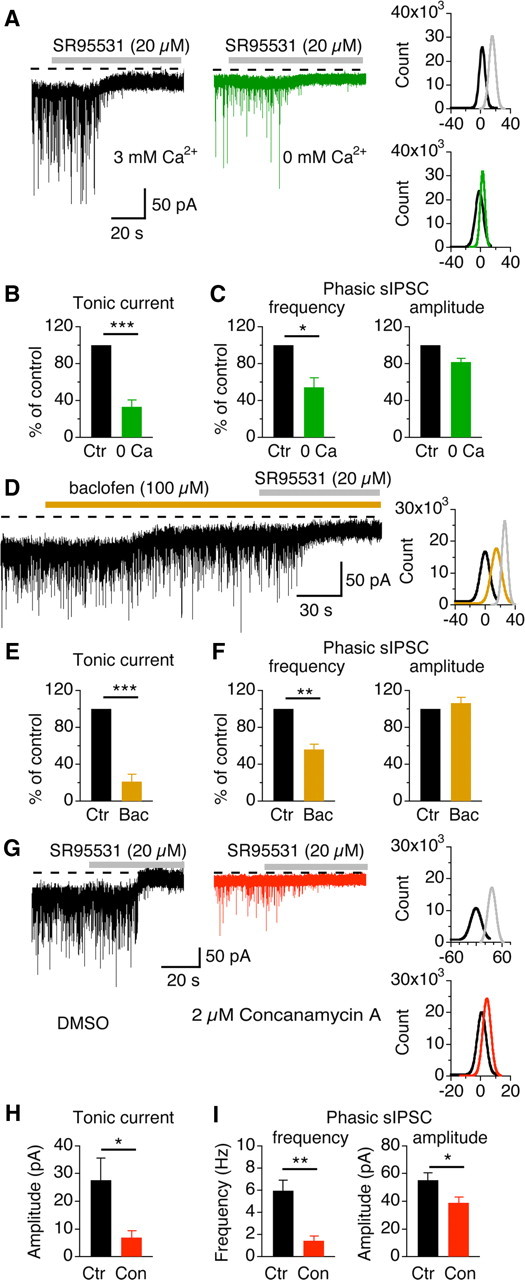Figure 3.

Experimental manipulations that reduce the release probability of GABA lead to a diminished tonic current. A, Left, Representative recordings from a middle/high-CF neuron under normal (black) and zero extracellular Ca2+ (green) conditions. Right, Gaussian fits to all-point histograms of the baseline currents (control, black; 0 Ca2+, green; SR95531, gray). B, Summary data showing that low Ca2+ (n = 5) significantly reduced the amplitude of the tonic current. C, Low Ca2+ reduced the frequency without changing the amplitude of sIPSCs. D, Baclofen (100 μm), a GABABR agonist, suppressed the tonic current (control, black; baclofen, orange; SR95531, gray). E, Summary data showing that baclofen (n = 5) significantly reduced the amplitude of the tonic current. F, Baclofen reduced the frequency without changing the amplitude of sIPSCs. G, Tonic current was not detectable in a middle/high-CF neuron recorded from a brain slice incubated for >1.5 h in ACSF containing concanamycin A (2 μm), an inhibitor of vesicular H+-ATPase, whereas tonic current was evident in an NL neuron recorded from another slice incubated in the vehicle (0.5% DMSO) (control, black; concanamycin A, red; SR95531, gray). H, I, Summary data showing that concanamycin A (n = 6) significantly reduced the amplitude of the tonic current, and the frequency and the amplitude of sIPSCs.
